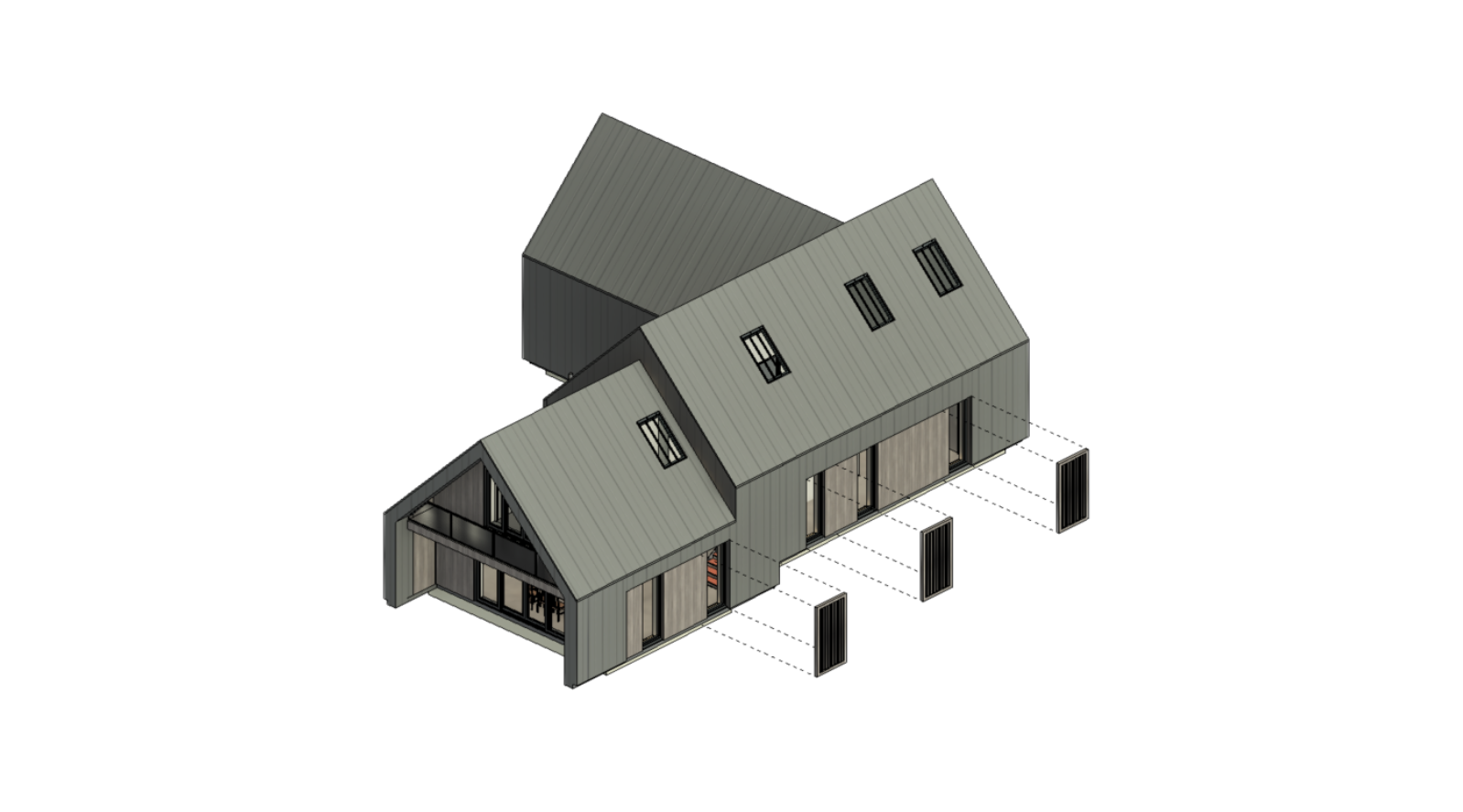We use cookies to provide you with a better experience and ads personalisation. Learn more in our Privacy Policy.
News
Collaboration delivers innovative design solution in response to building regulation changes
July 14, 2023
In 2025, all new homes will need to comply with the Future Homes Standard (FHS): with low carbon heating and improved insulation, the aim is that homes built after 2025 will produce 75-80% less carbon emissions than those built under the current building regulations.
The building regulation amendments that fall under the FHS will be some of the biggest changes in a generation, and with the exception deadline of 15th June 2023 now behind us, and 2025 fast approaching, how is the industry preparing?
We know that early collaboration and communication is the key to successful projects, so we teamed up with building compliance experts SEA and architectural firm OSG Architecture to look at a design solution that would meet the requirements of one of the new regulations, Part O.
What is Part O?
Adam Dodd, Operations Director at Harwood explains: “Approved Document Part O took effect on 15th June 2022 and sets out the requirements of mitigating overheating in new build homes and buildings where people sleep overnight.
“It’s about reducing the risk of overheating for health and wellbeing, to stop building tenants and inhabitants getting too hot. Importantly, it’s about limiting solar gain – through shading devices, building or glazing design – and removing excess heat – through opening windows or ventilation louvres, for example, rather than cooling.”
All new builds properties will be assessed using the SAP assessment scheme, which determines whether a building complies with the building regulations. Tom Owen, Director at SEA says: “Until June 2022, all the SAPs calculations had overheating within them, but now the Part O calculations feed directly into the SAPs.
“The SAP calculation works out the energy performance, but the measures that are used to reduce that heat are directly linked to SAPs – glazing, for example. The G value of the glass is important – the rate of heat coming through the glazing into the dwelling – the higher the G value, the more heat comes through into the building. With Part O, we are lowering the G value to reduce the amount of heat that comes through the glass.
“This ties into the SAP calculations because the more the heat gain is reduced, the more the heating demand increases and vice versa.”
What does Part O mean for building design?
Under Part O, there is a stipulation that if a property has ground floor bedrooms, with windows that are being used as part of a ventilation strategy, they need to be secure. Inhabitants need to be able to sleep at night without being too hot, so shutters are needed as a security measure for ground floor windows that can be opened.
“The trouble with security grills,” Adam explains, “is that they’re not always in keeping with the overall aesthetic of the building, often being added as an afterthought as a security measure.
“Tom and I noticed that there were very few attractive looking shutters on the market, and through conversations with Keith Owen, Director at OSG Architecture, started to look at a way to address the challenge of meeting the new Part O requirements, whilst maintaining an attractive design.”
Applying the new regulations to a live project
Keith explains: “We had a client who was developing 4 larger detached dwellings, based around a farmhouse with a courtyard and a couple of converted barns, to a high design quality.
“Due to the sloping nature of the site, we realised we were going to have to come in at first floor on at least one of the dwellings and then drop down to the ground floor, which led to bedrooms being at ground floor level, and as such under Part O we needed the solar shading to deal with that. At the same time, Part O also stipulates that if you have a ground floor bedroom, for security reasons you also need to have a shutter.
“So, we designed a sliding timber shutter that would work not just to meet Part O, but also the security aspect of the building regulations as well. This ensures that when inhabitants are asleep, windows can be left open, but the shutter can be locked.
“We designed sliding doors on rails to tie in with the overall barn feel, and used these on the ground floor windows, particularly where they were south facing, to try and limit the amount of glass that was directly affected by the sun, which then helps with the overshadowing calculations.
“This is one of the first schemes we’ve looked at since the change in regulations where we’ve started by designing in elements to deal specifically with those two sections of the regulations at planning stage.”
Adam comments: “It’s the first time I’ve seen a project approached like this. Every scheme will now need to take these changes into account, where there are ground floor windows that have the ability to be kept open at night.
“OSG have come up with a nice design solution specifically to deal with this, which also offers shading during the day.”
In conclusion: start planning early
“The point of this work,” Tom explains, “was to get us involved before the project goes into planning rather than after, which is typically when we get involved. It’s much better to get these design features incorporated at the beginning, rather than as an afterthought when it’s gone through planning.
“Once it’s gone through planning, it can be very costly and time consuming for clients to go back in to planning for brise soleil, for example, to mitigate overheating.
“With this project,” Tom continues, “we’ve taken the bull by the horns. There’s no point in clients burying their heads in the sand – these changes are going to impact all developments that are not currently out of the ground.
“It’s been great working with Adam and Keith as a team, and hopefully pushes the point across that as an industry this is what we’ve got to do. It’s part of the greater good to secure the safety of environment for future generations.”
To find out more about the specific project and the shutter design solution, contact Keith Owen at OSG Architecture. To discuss SAP calculations, contact Tom Owen at SEA Building Compliance, and for any building control queries relating to a project you may have in the pipeline, contact Adam Dodd at Harwood.

